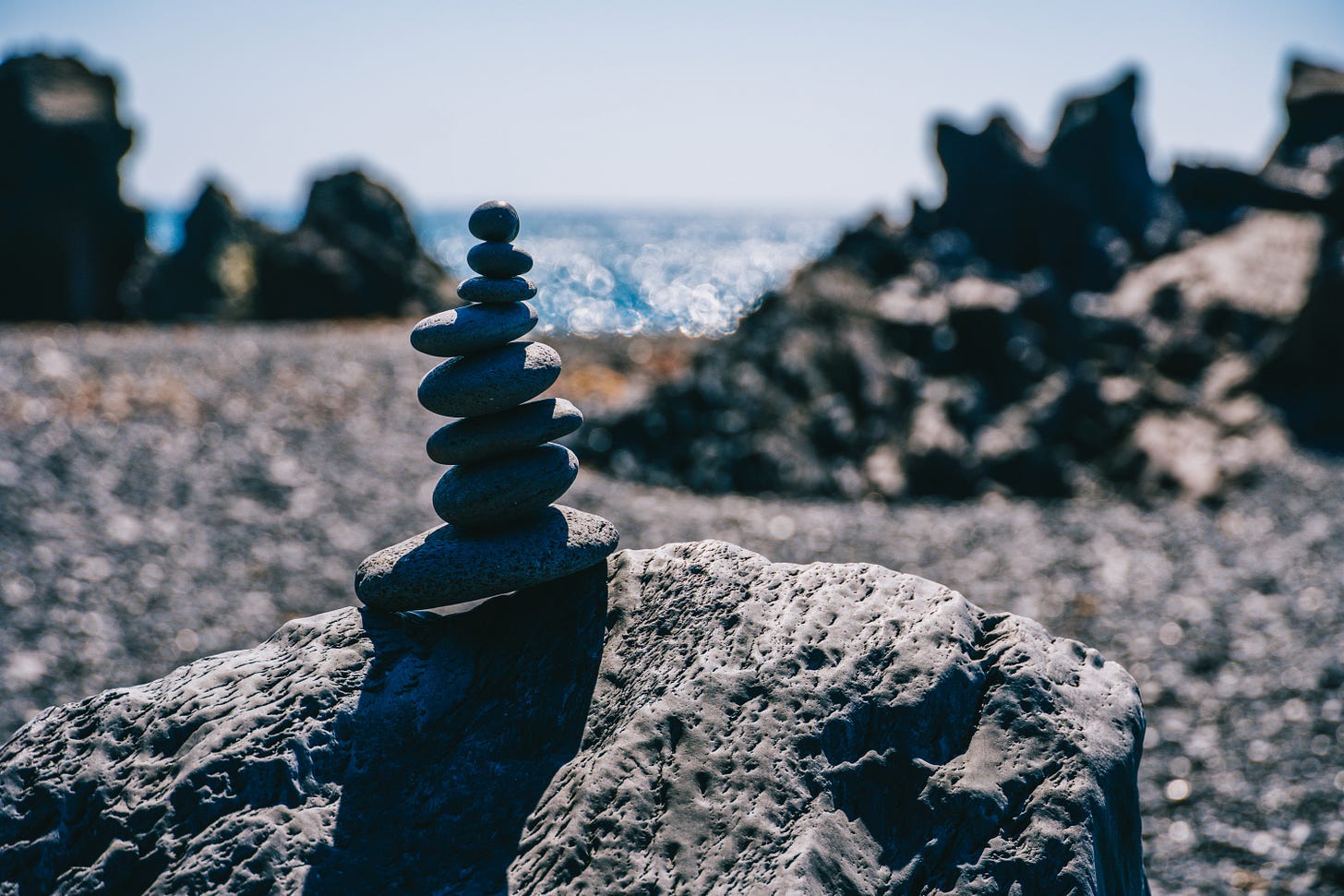"I've tried to meditate and can't"
A handful of hints to help habituate meditation
The more I talk about my daily mindfulness meditation practice, the more I get the comment that, “I’ve tried to meditate but I just can’t because...” and then a list of a few reasons.
I get it. I understand, I think most people who have a committed, habitual practice of any sort have been there. I started meditating in my 20s but stopped doing it for over a decade before I got really serious over seven years ago.
I think there are a few reasons why it stuck the second time around.
1. The right teacher
While I can now be as esoteric as the next meditator, my return to the practice came about through a scientific curiosity on the nature of improving well-being in ordinary moments. I needed to find a teacher who approached meditation without any religious or New Age topspin—enter Sam Harris. When the Waking Up App (which I recommend and use daily) came out in 2018, I was already a supporter of Sam’s podcast, so I thought I’d get what I hoped for and Sam more than delivered.
When you start to learn to ride a bike, you don’t learn from your twin sister, but from your parent—someone who already knows how to ride a bike and will look out for you and teach you a process that—given their love and knowledge of you—will ensure your success. This is how a meditation teacher should be.
2. Your intent
While many people start to meditate because it is good for their health, this is a bit like learning to ride a bike to improve your balance—it is one outcome, but not the primary one.
The way you feel about your life, your relationships, and the way you handle the ups and downs will be determined by the state of your mind.
Meditation is a life-long tool to more fully understand your mind and build the capability to recognize when you are thinking without knowing it, when your buttons are being pushed, when you need to pay attention and listen, and when you need to stop and smell the roses.
3. “Are we there yet?”
Meditating is hard. People expect that they will sit and be enraptured by something that was not there before. It doesn’t happen, they get distracted, bored, even fall asleep.
We have all been there.
You didn’t expect to ride a bike properly the first time, nor should you expect that calm, chatter-free, selflessness is available easily or readily—it takes time.
The practice is all about beginning again, there is no destination, only a journey of times where you are mindful and times which you are not. Waking up from mindlessness (or from the nap that crept up on you while meditating!) offers the opportunity to begin again.
4. Ten minutes (and many moments) each day
Start with just ten minutes each day. Good habits take at least a month to form, so don’t feel upset or beat yourself up for missing.
As importantly, take time off the cushion to recognize your conscious awareness—the sights, smells, sounds, feelings, tastes, and thoughts that fill your first person world. It’s important that your mind is full of experience in as many moments as possible, not just during formal practice.
5. A new friend that’s not your self
Make a friend of your mind by learning about it, listening to it, and on occasion offering some tough love. If you are too critical of yourself, notice that, notice what drives it, notice these thoughts melt under the heat lamp of awareness. If your mind is burdened (or boring you!) with thoughts, notice these thoughts melt under the heat lamp of awareness.
Try to find your self, your identity. Does your investigation turn up something, maybe located in your head? Is that self, that thought of your identity outside consciousness? Notice that consciousness appears more fundamental than the thought of self.
Give these handful of hints a try the next time you feel you can’t meditate and let me know if they work for you!


